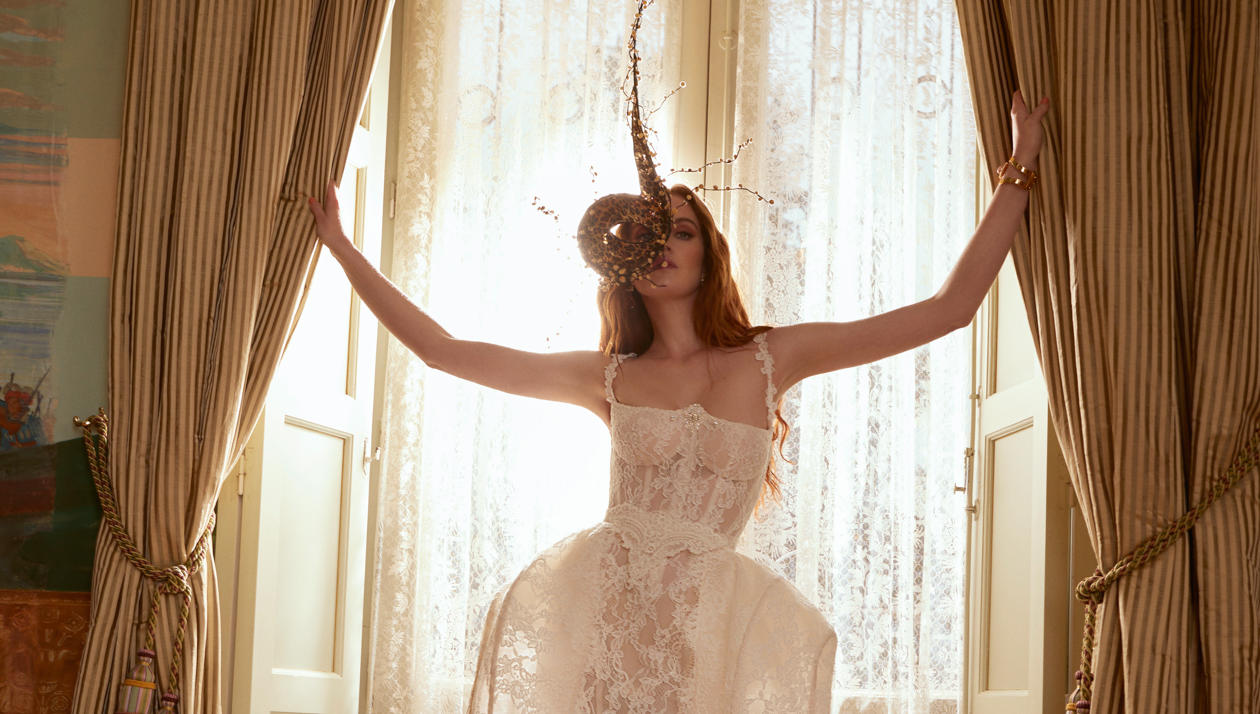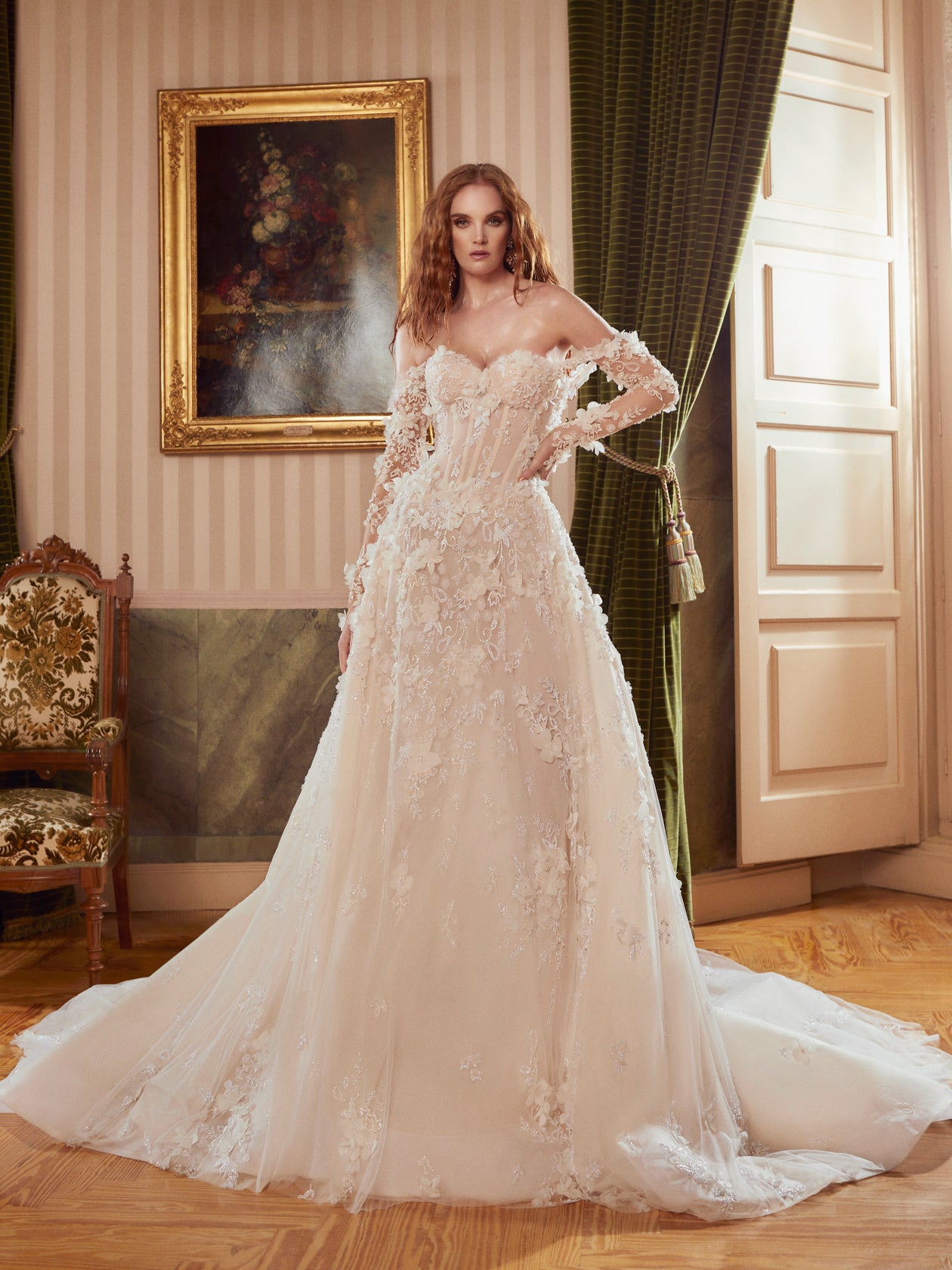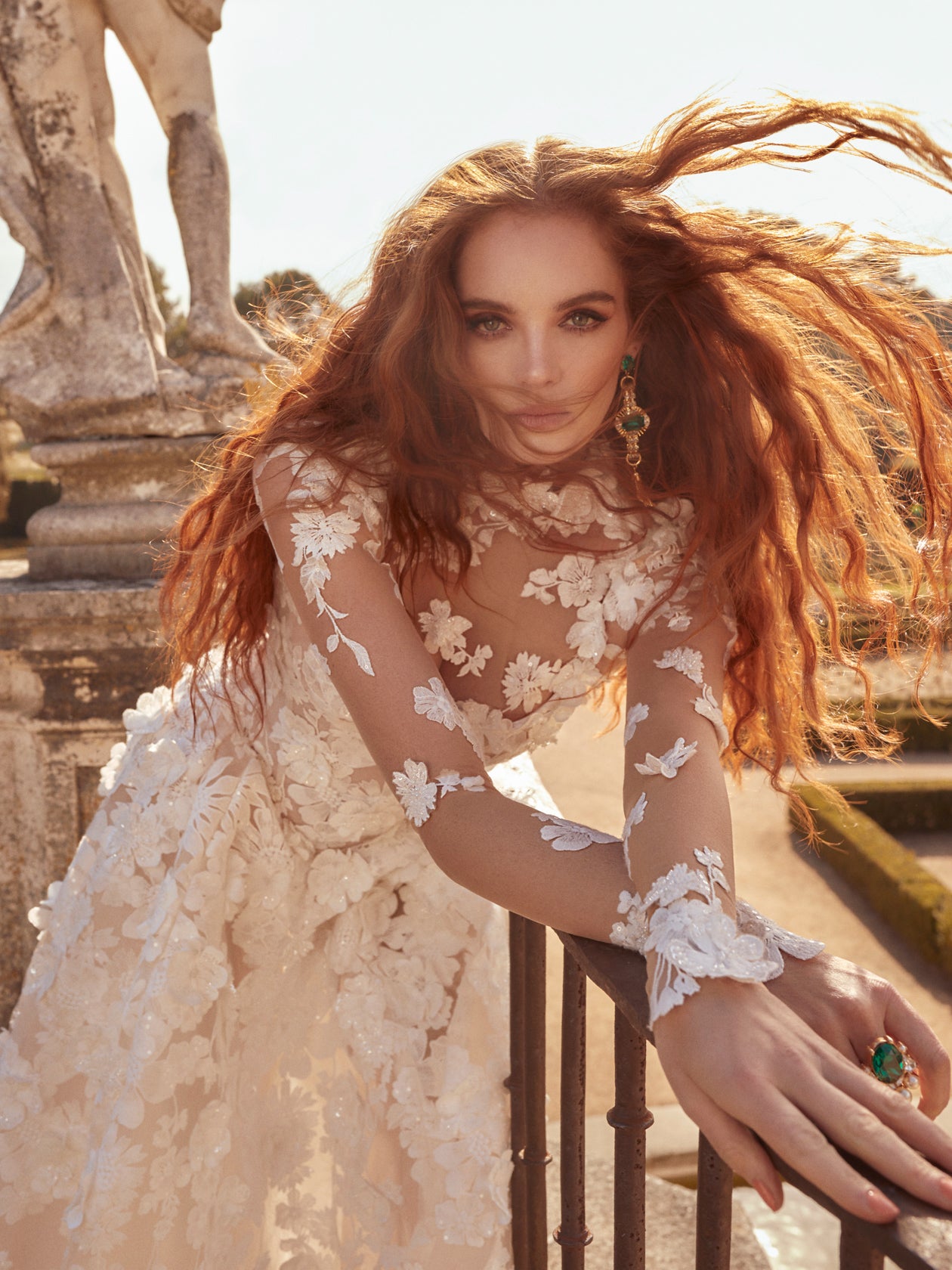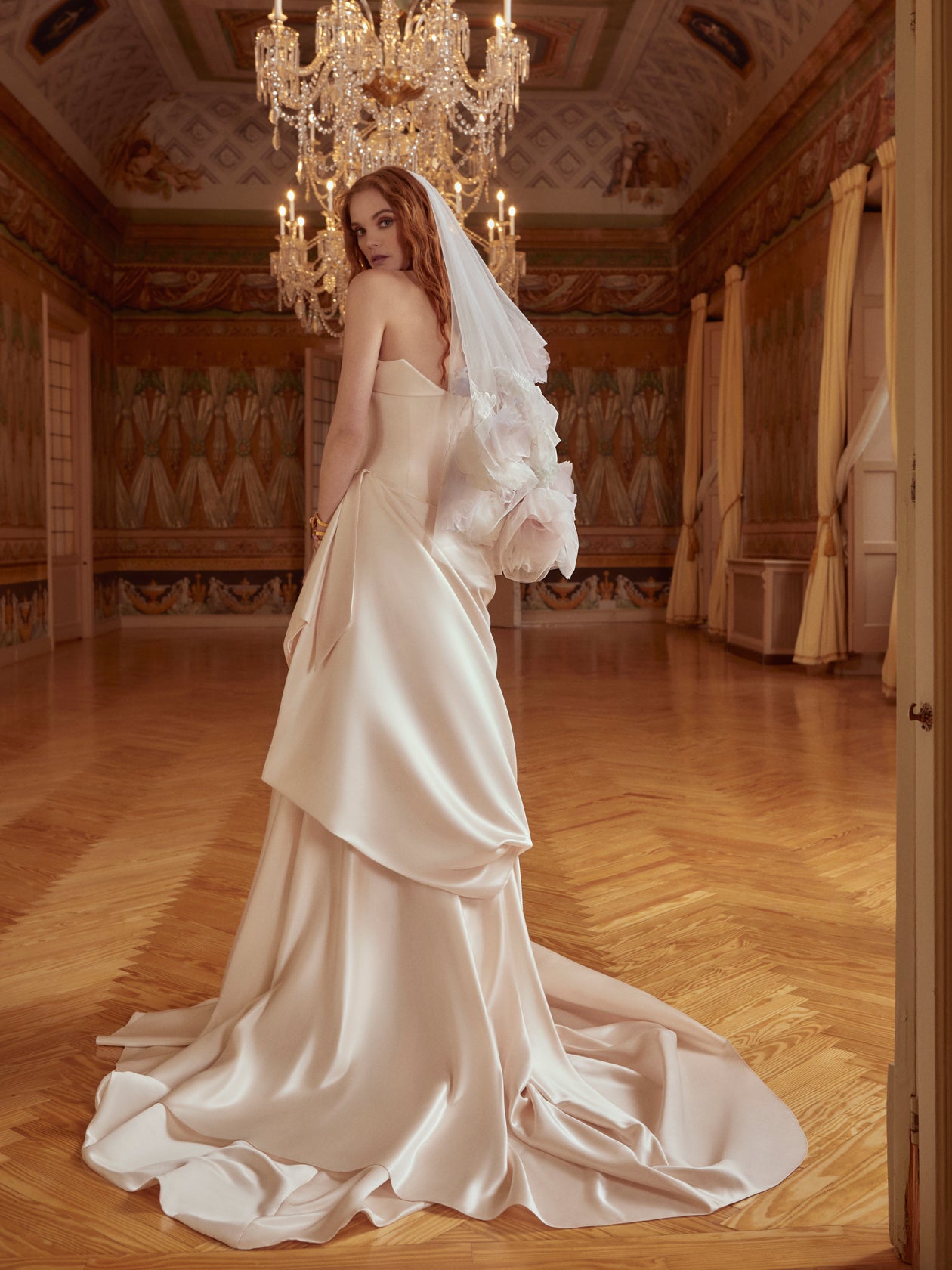
Celebrating Female Artists of the Pre-Raphaelite Era: A Tribute To Our Couture Collection
Written By Grace Yael
April 11, 2024
Seeks to rectify this oversight by celebrating these trailblazing women who transcended the role of muse to become formidable artists in their own right. Drawing inspiration from their works, we pay homage to their legacy through a collection that intertwines artistry, femininity, and timeless elegance.
In the realm of art history, the Pre-Raphaelite Brotherhood stands as a bastion of creativity and innovation. Yet, amidst the male-dominated narratives, the contributions of female artists like Elizabeth Siddal, Marie Spartali Stillman, and Jane Morris often remain overlooked.
You know her from Ophelia, John Edward Millais’ Pre-Raphaelite masterpiece depicting the Shakespearean heroine floating in a delicate silver flower embroidered gown. But what you may not know about Elizabeth Siddal, the flame-haired beauty who sat for the iconic painting, is that she was also an accomplished artist in her own right. Galia Lahav’s Spring 2025 couture collection, The Stunners, looks beyond the frame of this and other famous Pre-Raphaelite paintings to celebrate pathbreaking female artists like Siddall, Marie Spartali Stillman, and Jane Morris who were so much more than muses.

John Edward Millais’ Ophelia, 1852 | Galia Lahav's Vanity
In the canon of art history, the Pre-Raphaelite Brotherhood active in England during the second half of the 19th-century has been characterized as a band of great male artists who shook up the stuffy Victorian art establishment with their vivid and realistic paintings of female models posing as literary characters. Siddal, meanwhile, has been cast as something of a Pre-Raphaelite supermodel complete with a story of where she got discovered: working in a hat shop. While it’s true that she posed for Millais, Walter Deverell, and William Holman Hunt before becoming Dante Gabriel Rossetti’s wife and exclusive model, Siddal also earned the honor of being the only woman to exhibit at the first Pre-Raphaelite group exhibition in 1857. Her oeuvre includes lush jewel tone watercolors and the more spare pencil, pen, and ink drawing Lovers Listening to Music, a reverie of love depicting a happy couple being serenaded by string musicians.
Elizabeth Siddal’s Lovers Listening to Music, circa 1854 | Galia Lahav's Izzy
Tall and classically beautiful, Marie Spartali Stillman got her start as a model for Rossetti, Edward Burne-Jones and Ford Madox Brown in the 1860s, but went on to have a successful six-decade career as a painter during which she created more than 150 watercolors. Like her male counterparts, Stillman painted vibrant scenes from Shakespeare, Dante, and Boccaccio that centered female characters. Though little known today, during her lifetime she exhibited at the Royal Academy and other top UK and US galleries as well as at three World’s Fairs.


Marie Spartali Stillman’s Dante at Verona, 1888 | Galia Lahav's April
Jane Morris is another famous face from the Pre-Raphaelite era. One of Rossetti’s favorite models, she is the raven-haired vision in the oil painting A Day Dream and played Roman goddess Proserpine and Mariana from Shakespeare’s Measure for Measure. A talented embroiderer, she frequently collaborated with her husband, textile designer William Morris, on intricate needlework pieces such as a Honeysuckle design that was exhibited at the Louvre.
Jane Morris’ Honeysuckle embroidery, 1880s | Galia Lahav Heaven
Through the lens of our Spring 25 Collection, We wanted to pay tribute to the indomitable spirit and artistic vision of Elizabeth Siddal, Marie Spartali Stillman, and Jane Morris. In doing so, we wanted to honor not only their contributions to the art world but also reaffirms the power of creativity, resilience, and female empowerment.
As we admire Simphony’s exquisite creations, let us also reflect on the enduring legacy of these pioneering women who continue to inspire and captivate generations with their timeless artistry.